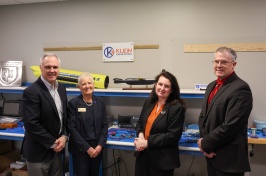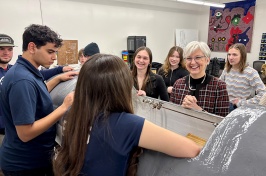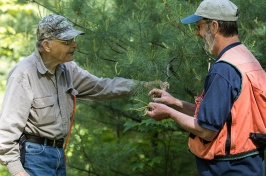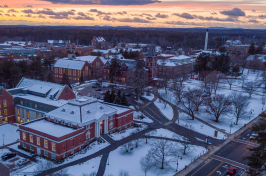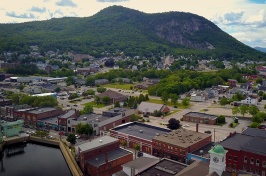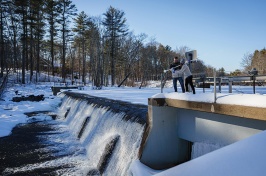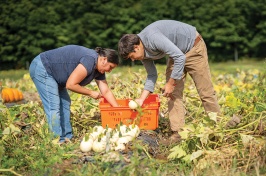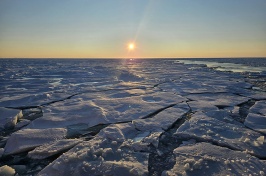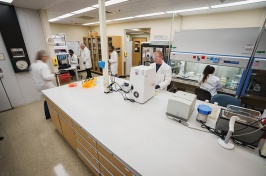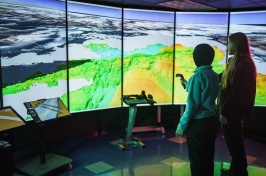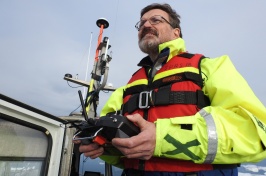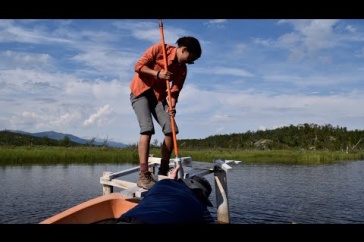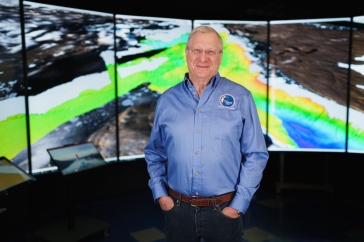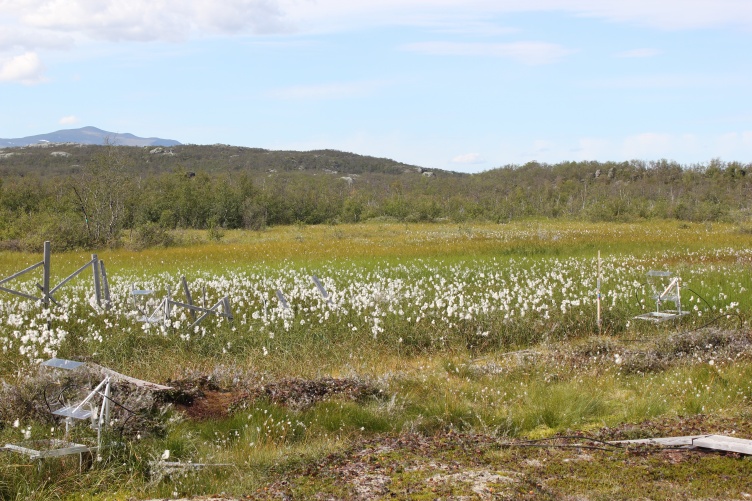
The fully thawed fens in the Arctic Circle in Abisko, Sweden where UNH researchers found higher levels of methylmercury, a neurotoxin, that could be harmful to wildlife, fishing industry and people.
Arctic communities who bear witness to the early impacts of climate change are grappling with a new challenge: As more of their permafrost thaws, mercury that was long held in the frozen ground is released not only into the surrounding waterways, but also into the soil and air, potentially leading to health concerns and ecological consequences for the people and wildlife in these northernmost regions.
In a new study published in Geochemical Perspectives Letters, researchers from the University of New Hampshire examined mercury reallocation — its movement from previously frozen soils into the surrounding environment — in the Stordalen Mire, north of the Arctic Circle in Abisko, Sweden. They found that as the landscape changes due to warming temperatures, there are “considerably higher” levels of methylmercury, the most toxic form of mercury, than in frozen landscapes.
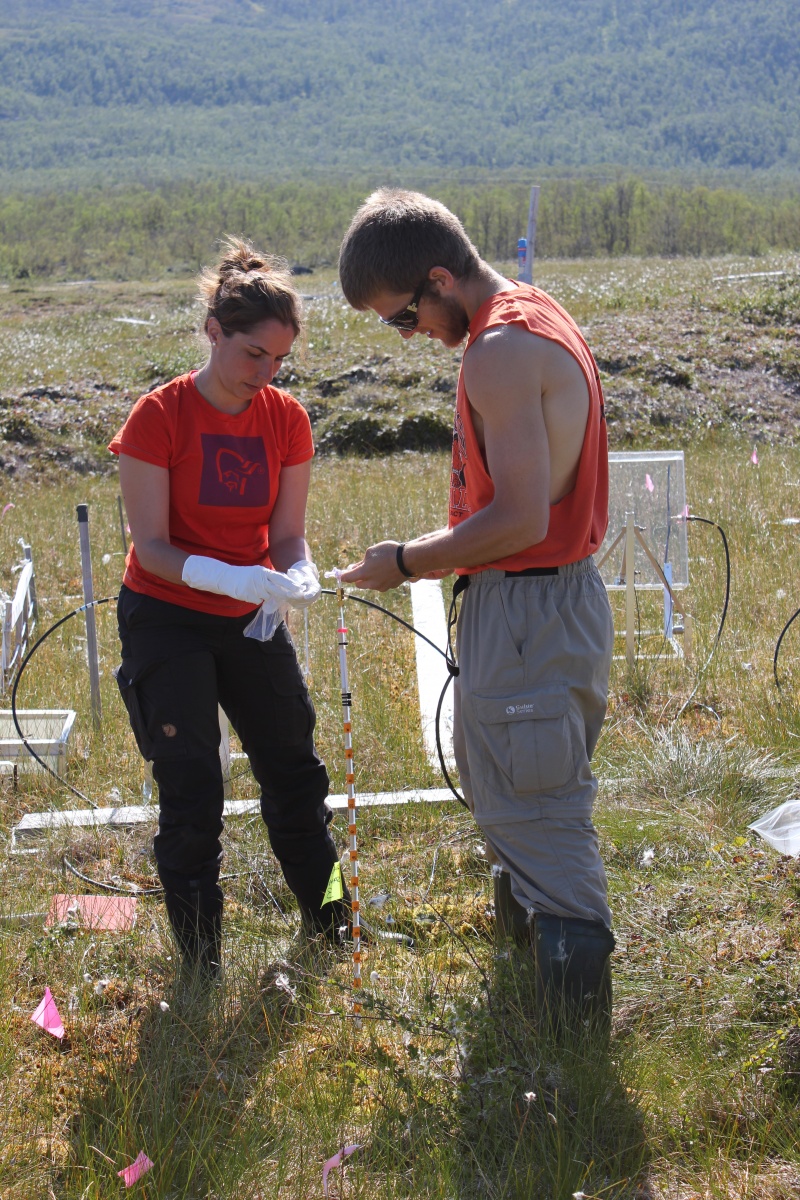
Florencia Fahnestock, a UNH Ph.D. candidate in Earth sciences and the first author of the study, notes that methylmercury movement into the environment has a cascade of effects for the region. “It’s not as simple as telling people not to eat the fish,” she says. “Our research suggests that Arctic wildlife, such as birds and fish, may be at increased risk of exposure to higher levels of methylmercury that could ultimately impact their reproduction and populations. It also has the potential to impact indigenous people if they are eating methylmercury-contaminated wildlife, and possibly the fishing industry, if the mercury is flushed out of the watershed into the ocean.”
“We don’t have a good handle on how the mercury gets into terrestrial food webs; it may depend on where land-based animals graze,” adds Julie Bryce, UNH professor of geochemistry and interim director for the UNH Leitzel Center. Bryce is also a co-author on the study. “Plants growing in some of these thawing environments could be laden with mercury.”
Mercury is naturally emitted into the atmosphere from volcanoes, forest fires, and the weathering of rocks, but the burning of fossil fuels and artisanal gold mining greatly contributes to its prevalence in the atmosphere. Mercury is then carried by the wind — often very far away from its original source — and deposited on the land or water, where it can remain in the ecosystem indefinitely or converted by microbes into methylmercury, a neurotoxin that is more readily taken up by animals. Its potency increases as it moves up the food chain, thus making it a public health concern.
Fahnestock wanted to examine how climate change is driving landscape evolution that favors methylmercury production. She and other researchers note that there’s a three-step series of landscape changes that are taking place in the Stordalen Mire as the Earth warms: The land can first transition from a palsa — a raised hummock with a core of ice that melts during the summers; it can then change into a bog-like feature, a semi-wet slumped depression containing sphagnum moss; and eventually it can become a fen filled with flowing water and fully thawed peat.
“I was shocked at how quickly the land is changing in Stordalen Mire. The Arctic ecosystem is transforming right in front of our eyes.”
In addition to studying the microbial communities in these three types of landscapes, the researchers analyzed the air, water, and soil for their methylmercury abundance. They found that the fens had much higher concentrations of methylmercury than the other landscapes. Fahnestock explains that fens tend to produce more methylmercury because the anaerobic conditions — those that lack oxygen — in the sediments provide the perfect environment for methylating microbes.
“Landscape evolution due to climate change will ultimately dictate the levels and the form of mercury found in the water, soil, and air,” she adds. And this evolution is happening at record speed: Drone footage captured by other UNH researchers indicates that the fen sites are expanding at a rapid pace in the Stordalen Mire.
“I was shocked at how quickly the land is changing in Stordalen Mire,” Bryce says. “The Arctic ecosystem is transforming right in front of our eyes.”
Findings from this research contribute to the bigger picture of climate-driven changes taking place in Stordalen Mire, where UNH professor of biogeochemistry Ruth Varner and many of her graduate students study methane and other greenhouse gas fluxes.
“As permafrost thaws, carbon is liberated and can be accessed by microbial communities to transform it into dissolved forms of carbon or greenhouse gases,” Varner explains. “Florencia's work ties this ecosystem response to climate warming to the mercury cycle, which expands our ability to determine the real impact of warming on these sensitive ecosystems that are changing very rapidly.”
This research was funded by the Iola Hubbard Climate Change Endowment, Karen Von Damm Memorial Awards, the Northern Ecosystems Research for Undergraduates (NERU), a UNH Department of Earth Sciences Graduate Research Award, and by the Genomic Science Program of the United States Department of Energy Office of Biological and Environmental Research.
The Institute for the Study of Earth, Oceans, and Space (EOS) is UNH’s largest research enterprise, comprising six centers with a focus on interdisciplinary, high-impact research on Earth and climate systems, space science, the marine environment, seafloor mapping, and environmental acoustics. With more than $43 million in external funding secured annually, EOS fosters an intellectual and scientific environment that advances visionary scholarship and leadership in world-class research and graduate education.
-
Written By:
Rebecca Irelan | Institute for the Study of Earth, Oceans, and Space | rebecca.irelan@unh.edu | 603-862-0990










